Road transportation
Our research topics on Road Transportation:
More details are here: https://www.traffic.bme.hu
Closed-loop traffic simulation environment
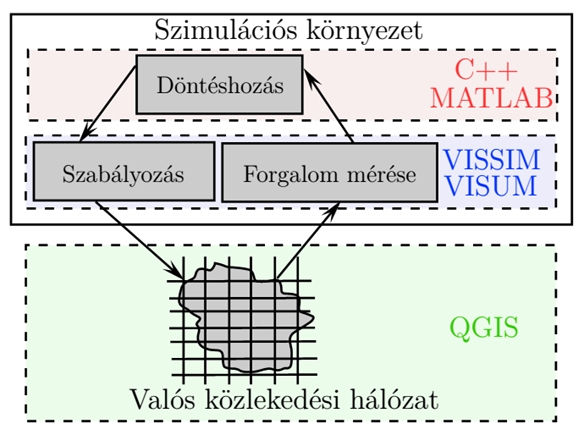
- Design of intelligent, adaptive traffic control algorithms.
- “HW in the loop” framework for design :
- SW: Vissim, Visum, Matlab, C++, Java, Vissim COM/API, QGIS, Siemens Scala traffic control client
- HW: Siemens signal heads, PLCs, Swarco traffic controllers, Futurit LED variable message signs
- The closed-loop environment permits efficient testing and validation of the designed traffic control system.
Freeway traffic modeling and control

- Macroscopic freeway traffic modeling using the analogue of gas-kinetic models.
- Model based control to avoid traffic congestion and reduce emissions.
- Effective traffic control measures:
- dynamic speed control: by reducing the admissible speed, traffic flow capacity and stability can be improved.
- ramp metering: traffic flow can be influenced through the control of entering vehicles on the ramp.
Emissions modeling and control
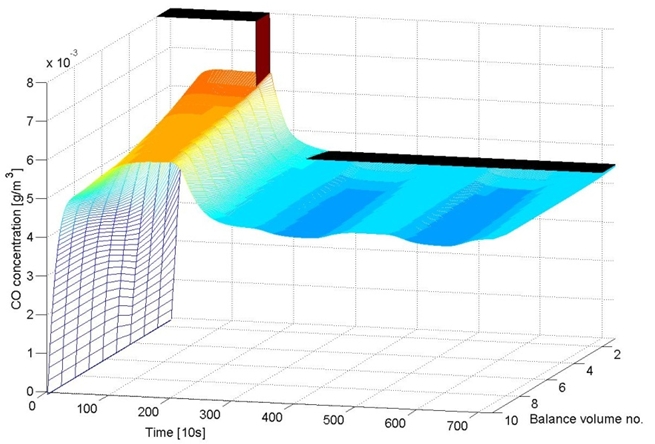
- Common pollutants of road traffic (COx, HC, NOX) can be modeled using traffic measurements.
- A complex traffic-emission model was elaborated based on the macroscopic description of traffic flow.
- Modeling of air pollutant concentrations in residential areas.
- Control design for the stabilization of shock waves and emission reduction on freeways.
- The figures depicts an example of CO pollutant concentrations with and without control measures.
Automatic incident detection on freeways
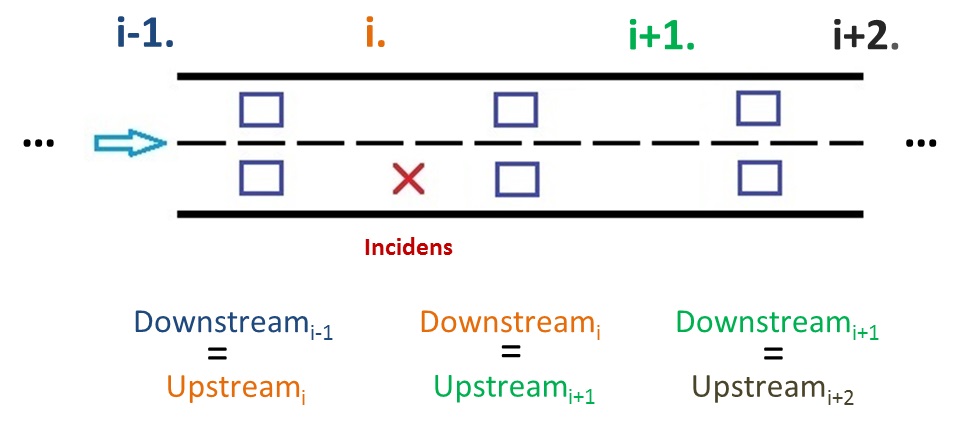
- The term "Incident on freeways" means any disturbance which influences the free flow of the traffic.
- Incident detection process:
- definition of discrete road sections within the observed area,
- check certain parameters of the traffic flow (usually in every 30 seconds),
- compare them to fixed threshold values.
- Threshold values are calibrated and then applied in a traffic dependent way.
The Reversible Lane Systems (RLS)
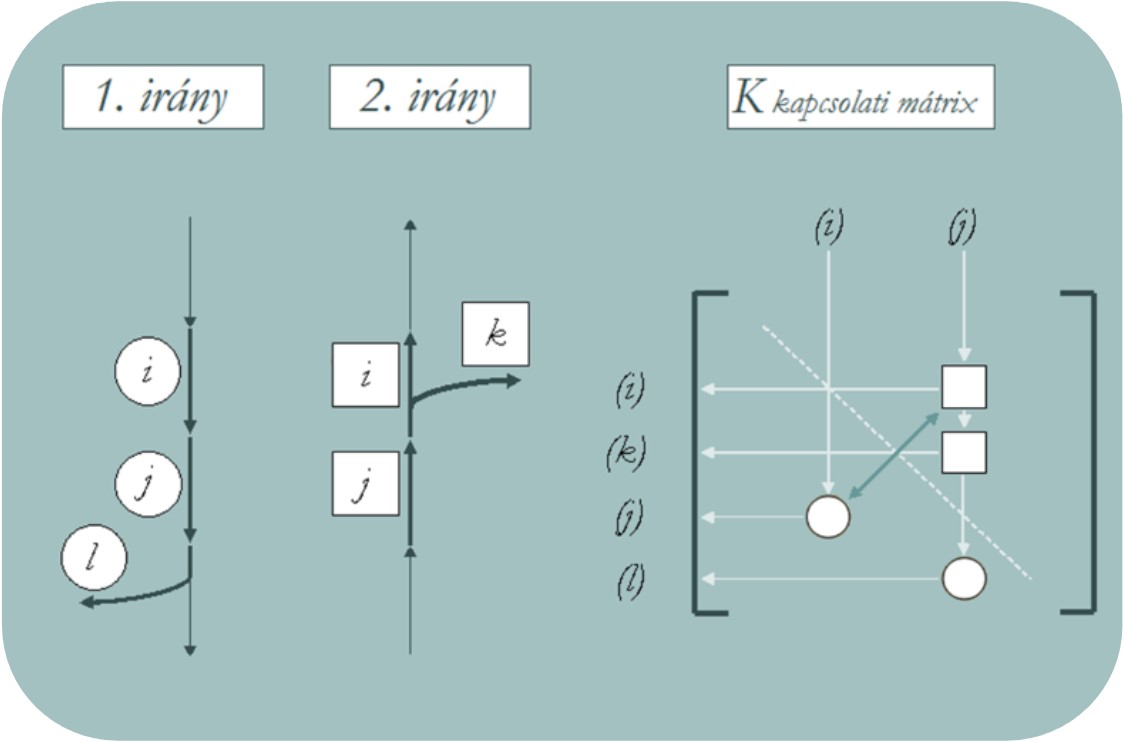
- The Reversible Lane Systems can be used:
- Against congestions (Construction Zone Traffic / Emergency Traffic Management )
- Temporary divertion of traffic (Event Traffic / Peak-Period Traffic Management )
- Mathematical modelling and analysis of the Reversible Lane Systems, definition of switching functions.
- Comparison of data obtained from the model with the vehicle dynamic parameters, and the validation of the model.
Optimal and robust urban traffic control
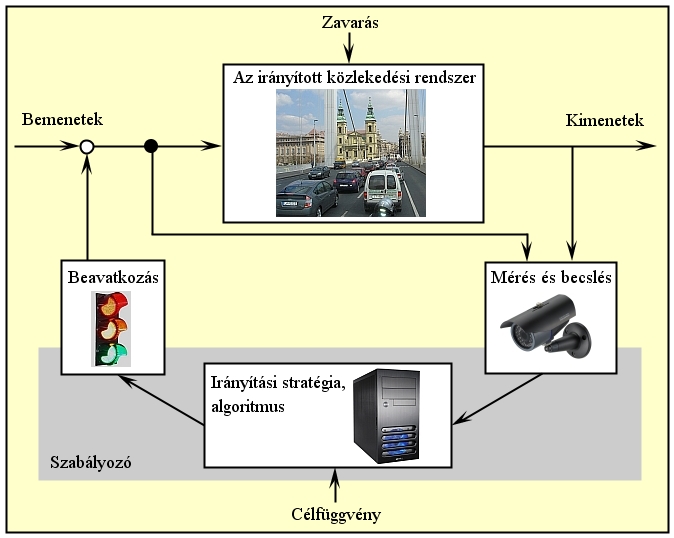
- Novel approach for urban traffic control using Robust Model Predictive Control.
- Minimax optimization on rolling predicted horizon.
- The main goal is to minimize the link queue lengths waiting at the stop light by considering demand uncertainty.
- The controller predicts the future states (queue lengths) and calculates the optimal green light time settings.
Perimeter control of protected urban network
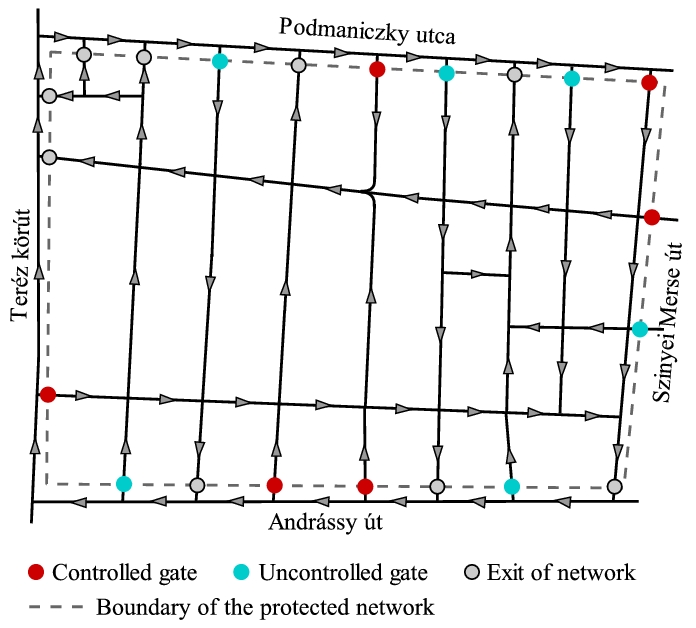
- Perimeter control: an alternative traffic control concept to protect city centers and dense urban areas against increasing demands posed during rush hour.
- The goal is to ensure stable and uncongested traffic in the protected network.
- Application of nonlinear Model Predictive Control based on the macroscopic fundamental diagram.
- In this concept, the control measures are performed by the traffic signal controllers at the boundary of the network.
Traffic estimation based on mobile signaling events

- Cellular phones can be used as tools to obtain information for traffic measurements, forecasting, and even traffic control.
- Handover (HO) and Location Area Updates (LAU) are automatically generated by cellular phones when contact between the cellular phones and location areas occurs.
- By measuring cellular signaling events, an origin-destination matrix can be constructed for reliable traffic assignment.
- The aggregated HO/LAU events can be used for travel time estimation in order to further improve macroscopic urban traffic modeling.
Data fusion for urban traffic estimation
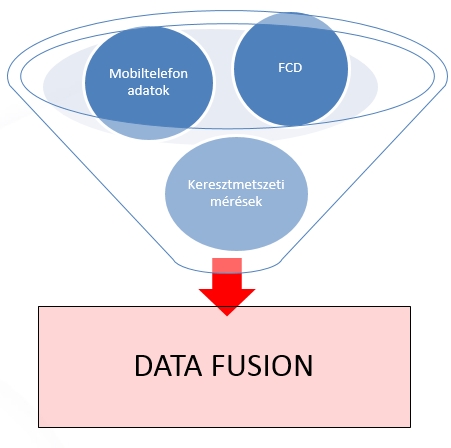
- Appropriate data fusion of mixed sensors may contribute to more efficient transportation systems and services.
- Alternative traffic measurement systems:
- FCD (Floating Car Data): GPS based information from fleet vehicles.
- FMD (Floating Mobile Data): traveling mobile terminals (server/client side) for travel times and origin-destination (OD) matrix estimations.
- Bluetooth based sensing: wireless devices in vehicles applying Bluetooth technology (e.g. mobile headsets and car audio systems) for travel times and OD matrix estimation.
- Data fusion technology by Switched Kalman Filter: urban traffic estimation and forecasting.
Smart signal heads

- Logic (PLC) built into the signal head which controls the signal lamp bulbs and communicates with the traffic controllers.
- There is no need to directly connect all bulbs to the traffic controller. Only a single logical connection is required, except for the power supply to each signal head.
- Advantages: less cable needed, simple system setup, economical.
- The elements of the test system: Siemens PLC, Actros VTC 3000 traffic controller, Siemens LED signal heads.



